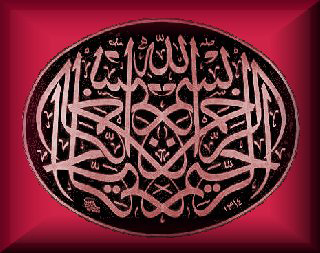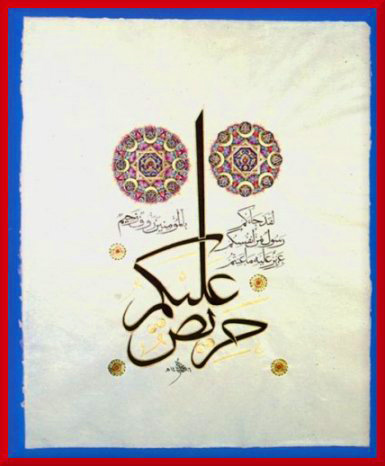
By Mumtaz Ali Tajddin S. Ali
The word miraj is derived from uruj means to ascend. The Koran (70:4) says, “To Him ascend the angels and soul” (taruljul malaikatu war’ruhi ilaihi), and in 97:4: “Angels and soul (from Him) descend (tanz’zalul malaikatu wa’ruhi), and also in 70:3: “Lord of the ways of ascent” (minal’lahi zil ma’arij).
The miraj refers to the heavenly ascension of the Prophet. The Koran says, “Glory be to Him Who made His servant to go on a night from the sacred mosque to the remote mosque of which We have blessed the precincts, so that We may show to him some of Our signs” (17:1).
The commentators write that the above verse refers to the miraj of the Prophet. The event is explained in the traditions, which have been narrated by different sources in different ways. According to Bukhari (1:97), the Prophet was transported from Kaba to Jerusalem on the back of a heavenly steed (buraq) from where he ascended to the seventh heaven. During his journey, he met the Prophets, like Adam, Jesus Christ, John, Joseph, Idris, Aaron, Moses and Abraham, at each heaven till he arrived at Sidrat al-Muntaha, where he was shown heavenly signs, such as hell, paradise, flowing rivers, orchards and angels praising God. Finally he discoursed with God and came back to Kaba.
The traditions differ so much one from the other that it is utterly impossible to reconcile them, unless it be either taken for granted that the same event occurred several times, or that some of them were discarded as spurious and apocryphal. Sir Syed Ahmed Khan writes in Essays on the Life of Muhammad (p. 370) that, “All these traditions are so much at variance with each other that, not to speak of the numerous other rules by which they might be proved to be false and spurious, the mere fact of their so manifestly contradicting one another nullifies them altogether.” Fazlur Rahman writes in Islam (London, 1966, p. 14) that, “The doctrine of a locomotive miraj or ascension developed by the orthodox and backed by hadith is no more than a historical fiction whose materials comes from various sources.”
There has been a difference of opinion among the Muslims whether the ascension was bodily or spiritual, the majority adheres to the first view, but among those who hold the latter view, there are personages of sound opinion. In fact, it is quite true that the Prophet was not asleep; he was in a vision though not in a dream; but at the same time it was not a corporeal ascension. He was actually carried to the Holy Presence, and shown great wonders, but it was in spirit that he was carried, and it was the spiritual eye, for things spiritual can only be perceived with the spiritual eye.
Dr. Zahid Ali writes in Ismaili mazhab aur usaka nizam that a man asked Imam al-Muizz the interpretation of “sacred mosque” and the “remote mosque” (in the above Koranic verse 17:1), the Imam said, “The sacred mosque refers to nafs and the remote mosque means aql.” According to Tafsir-i Kabir, “Muhammad ibn Gharir writes in his commentary that in the tradition of Huzefa, the Prophet’s ascension is given spiritual, not bodily, and truly he was elevated spiritually.” In the tradition of al-Muslim and Tirmizi, Ibn Abbas relates that, “The Apostle of God has seen God in his heart, not by eyes” (lam yarahu rasulillah baini’hi inama raha bi’kalbihi). Malik bin Sahsia Ansari relates the Prophet as saying, “I was lying in the Kaba between the state of dream and consciousness” (bayana ana indal bai’t ba’inali na’im wal yakzan).
Sir Syed Ahmed Khan writes, “All that the Mohammedans must believe respecting the miraj is that the Prophet saw himself, in a vision, transported from Mecca to Jerusalem, and that in such vision he really beheld some of the greatest signs of his Lord (Ibid.)
In sum, the teachings of Islam and the event pertaining to the life of the Prophet, such as miraj aim at revealing the truth, which could transform man into Insan kamil. The miraj is the highest form of religious experience in the life of the Prophet. In it the Prophet perceived the hidden realities and intensely felt the communication with God. His spiritual separation with the world that night denotes the goal to which human life is moving, an inconceivable but real existence beyond the reach of our present faculties.
Source:
- Encyclopaedia of Ismailism
Karachi, 2006, pp. 401-2
Source: http://www.amaana.org/islam/miraaj.htm
*****
Also Read
Mohammad Prophet of Islam
Published January 21, 2013 | By Amaana

Now hath come unto you An Apostle from amongst Yourselves; it grieves him that you should perish; Ardently anxious is he over you: to the believers is he the most kind and merciful. Sura 9-128
By Prof. K. S. Ramakrishna Rao
Head of the Department of Philosophy,
Government College for Women University of Mysore, Mandya-571401 (Karnatika).
Re-printed from “Islam and Modern age”, Hydrabad, March 1978
Editor’s note: Author of this article is a non-Muslim. Enjoy!
*****
In the desert of Arabia was Mohammad born, according to Muslim historians, on April 20, 571. The name means highly praised. He is to me the greatest mind among all the sons of Arabia. He means so much more than all the poets and kings that preceded him in that impenetrable desert of red sand.
When he appeared Arabia was a desert — a nothing. Out of nothing a new world was fashioned by the mighty spirit of Mohammad — a new life, a new culture, a new civilization, a new kingdom which extended from Morocco to Indies and influenced the thought and life of three continents — Asia, Africa and Europe.
When I thought of writing on Mohammad the prophet, I was a bit hesitant because it was to write about a religion I do not profess and it is a delicate matter to do so for there are many persons professing various religions and belonging to diverse school of thought and denominations even in same religion. Though it is sometimes, claimed that religion is entirely personal yet it can not be gain-said that it has a tendency to envelop the whole universe seen as well unseen. It somehow permeates something or other our hearts, our souls, our minds their conscious as well as subconscious and unconscious levels too. The problem assumes overwhelming importance when there is a deep conviction that our past, present and future all hang by the soft delicate, tender silked cord. If we further happen to be highly sensitive, the center of gravity is very likely to be always in a state of extreme tension. Looked at from this point of view, the less said about other religions the better. Let our religion be deeply hidden and embedded in the resistance of our innermost hearts fortified by unbroken seals on our lips.
But there is another aspect of this problem. Man lives in society. Our lives are bound with the lives of others willingly or unwillingly, directly or indirectly. We eat the food grown in the same soil, drink water, from the same the same spring and breathe the same air. Even while staunchly holding our own views, it would be helpful, if we try to adjust ourselves to our surroundings, if we also know to some extent, how the mind of our neighbor moves and what the main springs of his actions are. From this angle of vision it is highly desirable that one should try to know all religions of the world, in the proper sprit, to promote mutual understanding and better appreciation of our neighborhood, immediate and remote.
Further, our thoughts are not as scattered as appear to be on the surface. They have got themselves crystallized around a few nuclei in the form of great world religions and living faiths that guide and motivate the lives of millions that inhabit this earth of ours. It is our duty, in one sense if we have the ideal of ever becoming a citizen of the world before us, to make a little attempt to know the great religions and system of philosophy that have ruled mankind.
In spite of these preliminary remarks, the ground in this field of religion, where there is often a conflict between intellect and emotion is so slippery that one is constantly reminded of fools that rush in where angels fear to tread. It is also not so complex from another point of view. The subject of my writing is about the tenets of a religion which is historic and its prophet who is also a historic personality. Even a hostile critic like Sir William Muir speaking about the holy Quran says that. “There is probably in the world no other book which has remained twelve centuries with so pure a text.” I may also add Prophet Mohammad is also a historic personality, every event of whose life has been most carefully recorded and even the minutest details preserved intact for posterity. His life and works are not wrapped in mystery.
(…)
Read more http://www.amaana.org/ismaili/mohammad-prophet-of-islam/
->>>>><<<<<-


















